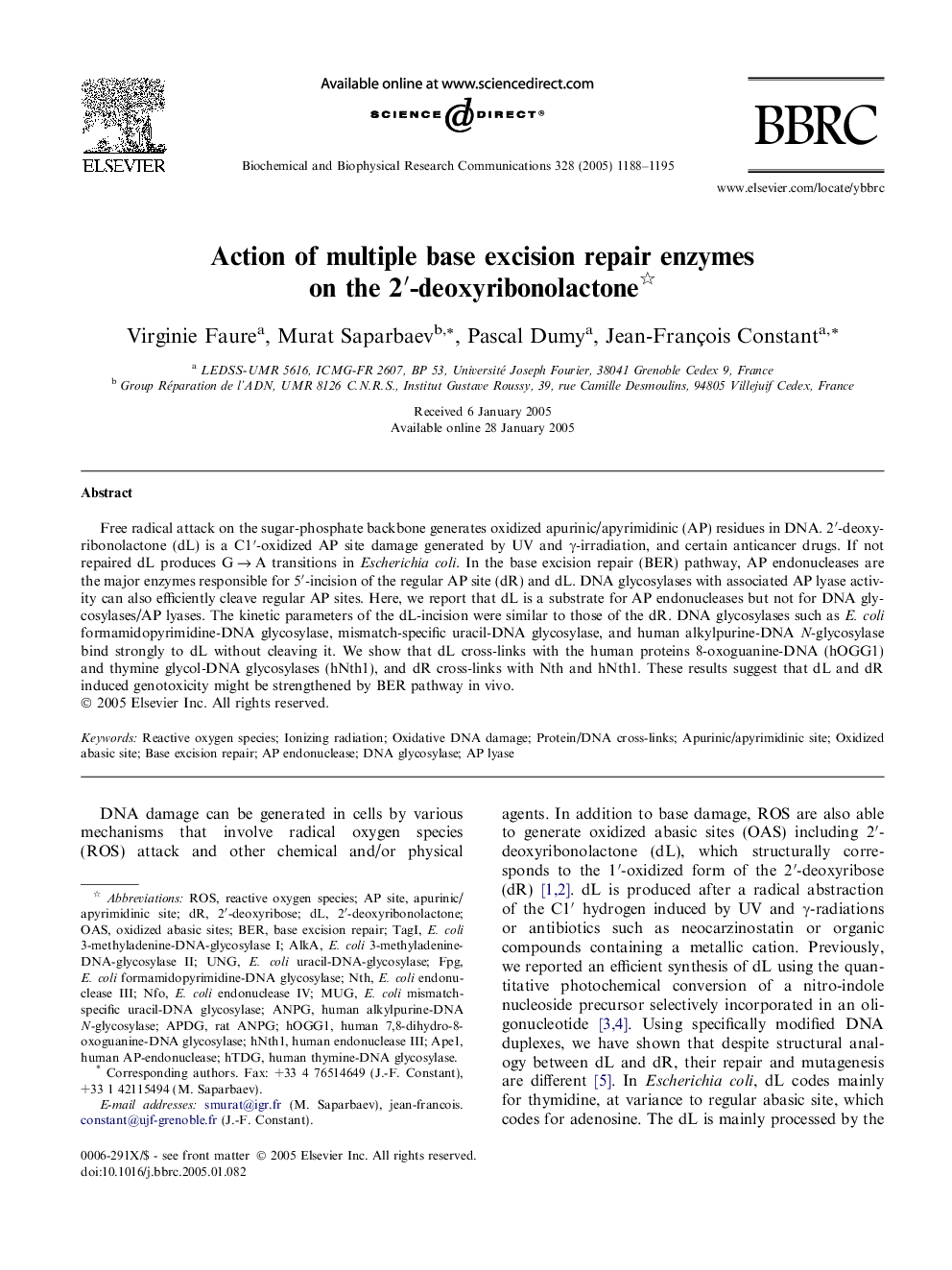| کد مقاله | کد نشریه | سال انتشار | مقاله انگلیسی | نسخه تمام متن |
|---|---|---|---|---|
| 10770668 | 1050834 | 2005 | 8 صفحه PDF | دانلود رایگان |
عنوان انگلیسی مقاله ISI
Action of multiple base excision repair enzymes on the 2â²-deoxyribonolactone
دانلود مقاله + سفارش ترجمه
دانلود مقاله ISI انگلیسی
رایگان برای ایرانیان
کلمات کلیدی
موضوعات مرتبط
علوم زیستی و بیوفناوری
بیوشیمی، ژنتیک و زیست شناسی مولکولی
زیست شیمی
پیش نمایش صفحه اول مقاله

چکیده انگلیسی
Free radical attack on the sugar-phosphate backbone generates oxidized apurinic/apyrimidinic (AP) residues in DNA. 2â²-deoxyribonolactone (dL) is a C1â²-oxidized AP site damage generated by UV and γ-irradiation, and certain anticancer drugs. If not repaired dL produces G â A transitions in Escherichia coli. In the base excision repair (BER) pathway, AP endonucleases are the major enzymes responsible for 5â²-incision of the regular AP site (dR) and dL. DNA glycosylases with associated AP lyase activity can also efficiently cleave regular AP sites. Here, we report that dL is a substrate for AP endonucleases but not for DNA glycosylases/AP lyases. The kinetic parameters of the dL-incision were similar to those of the dR. DNA glycosylases such as E. coli formamidopyrimidine-DNA glycosylase, mismatch-specific uracil-DNA glycosylase, and human alkylpurine-DNA N-glycosylase bind strongly to dL without cleaving it. We show that dL cross-links with the human proteins 8-oxoguanine-DNA (hOGG1) and thymine glycol-DNA glycosylases (hNth1), and dR cross-links with Nth and hNth1. These results suggest that dL and dR induced genotoxicity might be strengthened by BER pathway in vivo.
ناشر
Database: Elsevier - ScienceDirect (ساینس دایرکت)
Journal: Biochemical and Biophysical Research Communications - Volume 328, Issue 4, 25 March 2005, Pages 1188-1195
Journal: Biochemical and Biophysical Research Communications - Volume 328, Issue 4, 25 March 2005, Pages 1188-1195
نویسندگان
Virginie Faure, Murat Saparbaev, Pascal Dumy, Jean-François Constant,